Related Research Articles

Dublin Castle is a major Irish government complex, conference centre, and tourist attraction. It is located off Dame Street in central Dublin.

Sir William Dugdale was an English antiquary and herald. As a scholar he was influential in the development of medieval history as an academic subject.

William Paulet, 1st Marquess of Winchester, styled Lord St John between 1539 and 1550 and Earl of Wiltshire between 1550 and 1551, was an English Lord High Treasurer, Lord Keeper of the Great Seal, and statesman.
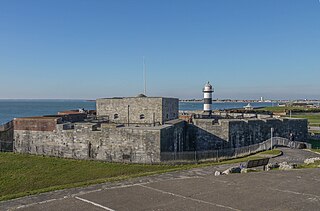
Southsea Castle, historically also known as Chaderton Castle, South Castle and Portsea Castle, is an artillery fort originally constructed by Henry VIII on Portsea Island, Hampshire, in 1544. It formed part of the King's Device programme to protect against invasion from France and the Holy Roman Empire, and defended the Solent and the eastern approach to Portsmouth. The castle had a square central keep, two rectangular gun platforms to the east and west, and two angled bastions to the front and rear, and was an early English example of the trace italienne-style of fortification popular on the Continent. The Cowdray engraving of the Battle of the Solent in 1545 depicted Henry VIII visiting the castle. Despite several serious fires, it remained in service and saw brief action at the start of the English Civil War in 1642 when it was stormed by Parliamentary forces.

The Constable and Governor of Windsor Castle is in charge of Windsor Castle in England on behalf of the sovereign. The day-to-day operations are under the Superintendent, who is an officer of the Master of the Household's Department of the Royal Household.

David Hubert Boothby Chesshyre was a British officer of arms.
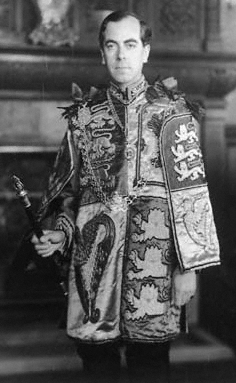
Sir Anthony Richard Wagner was a long-serving officer of arms at the College of Arms in London. He served as Garter Principal King of Arms before retiring to the post of Clarenceux King of Arms. He was one of the most prolific authors on the subjects of heraldry and genealogy of the 20th century.

Stephen Martin Leake was a numismatist and long-serving officer of arms at the College of Arms in London.
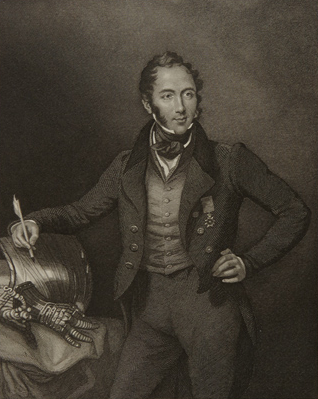
Sir Samuel Rush Meyrick, KH was an English collector and scholar of arms and armour. He lived at Goodrich Court, Goodrich, Herefordshire, and introduced systematic principles to the study of his subject.

Sir William Sharington was an English landowner and merchant, a courtier of the time of Henry VIII, master and embezzler of the Bristol Mint, member of parliament, conspirator, and High Sheriff of Wiltshire.

Sir William St Loe (1518–1565) was a 16th-century English soldier, politician and courtier. He was the third husband of Bess of Hardwick, his second wife. His official positions included Captain of the Yeomen of the Guard, Chief Butler of England and Member of Parliament for Derbyshire.
Sir William Knyvett was an English knight in the late Middle Ages. He was the son of John Knyvett and Alice Lynne, the grandson of Sir John Knyvett, and assumed the titles of Sheriff of Norfolk & Suffolk, Burgess of Melcombe, Bletchingley, & Grantham, Constable of Rising Castle.
Sir Henry Seymour was an English landowner and MP, the brother of Jane Seymour, queen consort of Henry VIII, and consequently uncle to Edward VI. He was created a Knight of the Bath after his nephew's coronation.
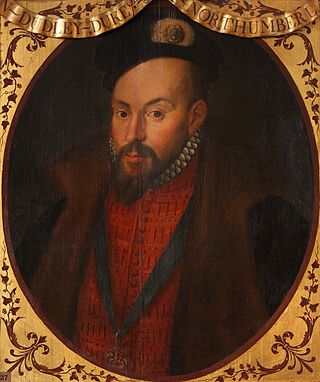
An Esquire of the Body was a personal attendant and courtier to the Kings of England during the Late Middle Ages and the early modern period. The Knight of the Body was a related position, apparently sometimes merely an "Esquire" who had been knighted, as many were. The distinction between the two roles is not entirely clear, and probably shifted over time. The positions also existed in some lesser courts, such as that of the Prince of Wales.
Sir Thomas Stanley was an English politician who sat in the Parliament of Ireland MP for County Tipperary and Waterford and County Louth in the Restoration Parliament, 1661–62. He joined the Privy Council of Ireland in March 1674.

Thomas Knyvett (1596–1658) was an English JP and Royalist during the English Civil War
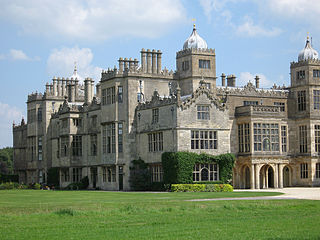
Sir Henry Knyvet (1537–1598) of Charlton Park, Wiltshire, was an English Member of Parliament.

Galyon Hone was a glazier from Bruges who worked for Henry VIII of England at Hampton Court and in other houses making stained glass windows. His work involved replacing the heraldry and ciphers of Henry VIII's wives in windows when the king remarried.
Roger Ratcliffe was an English courtier.

One of the earliest documented uses of Yeoman, it refers to a servant or attendant in a late Medieval English royal or noble household. A Yeoman was usually of higher rank in the household hierarchy. This hierarchy reflected the feudal society in which they lived. Everyone who served a royal or noble household knew their duties, and knew their place. This was especially important when the household staff consisted of both nobles and commoners. There were actually two household hierarchies which existed in parallel. One was the organization based upon the function (duty) being performed. The other was based upon whether the person performing the duty was a noble or a commoner.
References
- ↑ "Sir Anthony Knyvett (c1486-1549)". Archived from the original on 26 April 2012. Retrieved 27 December 2011.
- ↑ A Collection of Ordinances and Regulations for the Government of the Royal Household (London, 1790), p. 154.
- ↑ London, Society of Antiquaries of (1790). A Collection of Ordinances and Regulations for the Government of the Royal Household, Made in Divers Reigns: From King Edward III. to King William and Queen Mary. Also Receipts in Ancient Cookery. Society of Antiquaries. p. 154.
- ↑ Shaw, William Arthur; Burtchaell, George Dames (1906). The Knights of England. A complete record from the earliest time to the present day of the knights of all the orders of chivalry in England, Scotland, and Ireland, and of knights bachelors, incorporating a complete list of knights bachelors dubbed in Ireland. Robarts - University of Toronto. London Sherratt and Hughes. p. 51.
- 1 2 Lara. "Question from Rachel - Death of Anthony Knyvett" . Retrieved 4 April 2024.
- ↑ Mason, J. (1848). Martyrologia; or, records of religious persecution. p. 226. Retrieved 1 October 2012.
The Lieutenant of the Tower, whom they had threatened to report to the King because he would not rack her to their satisfaction, hastened away to the King before them, and begged His Grace's pardon for deficiency of obedience, pleading compassion towards a woman.
- ↑ Stephen Brooks and John McIlwain (editor), Southsea Castle, Pitkin Guides 1996, ISBN 0-85372-809-7 (pp.6-7)